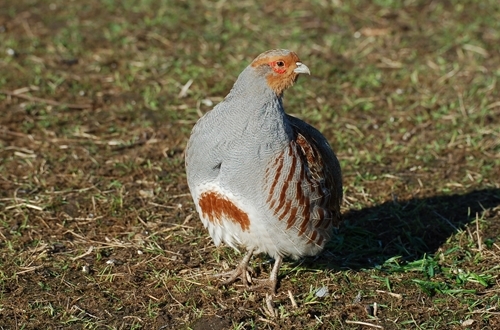
HUNDREDS of gamekeepers, farmers and landowners are being urged to get involved in a project which helps to conserve a much-loved bird.
The Game & Wildlife Conservation Trust (GWCT) has run the voluntary Partridge Count Scheme (PCS) since 1933 to collect information on the annual abundance and breeding success of grey partridges.
From small fields to large estates, each count offers a valuable insight into how well your partridges breed, survive and benefit from your habitat and management provision.
Over the years, grey partridge numbers have been affected by wet summers, low chick survival and problems with low winter survival rates.
This is something the bird is adapted to, but their chick survival rates can be helped by having chick-food producing habitat and management in place to minimise losses.
GWCT scientist Neville Kingdon, who collates the results each year, says every bird which gets recorded is vital, as the Autumn count gets under way.
“To get a national recovery, we need a national response,” he stressed.
“It’s the time of the year where crops are being cut and we can see birds so it’s the perfect time to go out on your land and take part in the count.
“We’re not just interested in big numbers, every single count matters and can often be enjoyed as an activity with the family.”
“Grey partridges, on sites in the PCS, are showing signs of recovery in numbers and those who take part are helping reverse the decline of this once common farmland bird.”
Within the PCS, regular meetings of the 15 regional grey partridge groups provide face-to-face explanation on how to manage land effectively for grey partridges.
Factsheets on habitat creation, management and predation control are also available for download from the GWCT’s advisory web pages. Measures taken to improve conditions for grey partridges will help a range of other species of farmland bird.
PCS participants undertake a partridge count twice a year - once in spring and again in autumn - either in the morning or in the evening.
Head of education at GWCT, Mike Swan, recently took part in a count in Cornwall where work for the Trust’s Cornish Grey Partridge Project is centred.
He said: “It was a joy to see a well-grown covey with six young; probably the first covey to be produced in the wild in Cornwall for over a decade. There is a long way to go before we can say that there is a self-sustaining population back in Cornwall, but this is a very encouraging result for the first year.”
There are no restrictions on how many partridges you need to have as each and every one matters and all counts are submitted to the GWCT’s national database.
To take part, complete this form online.
For more information, or further questions, contact partridgecountscheme@gwct.org.uk.
Notes to editors
The Game & Wildlife Conservation Trust – providing research-led conservation for a thriving countryside. The GWCT is an independent wildlife conservation charity which has carried out scientific research into Britain’s game and wildlife since the 1930s. We advise farmers and landowners on improving wildlife habitats. We employ more than 60 post-doctoral scientists and other research staff with expertise in areas such as birds, insects, mammals, farming, fish and statistics. We undertake our own research as well as projects funded by contract and grant-aid from government and private bodies.
For information, contact:
Eleanor Williams
Telephone: 07592 025476
Email: press@gwct.org.uk